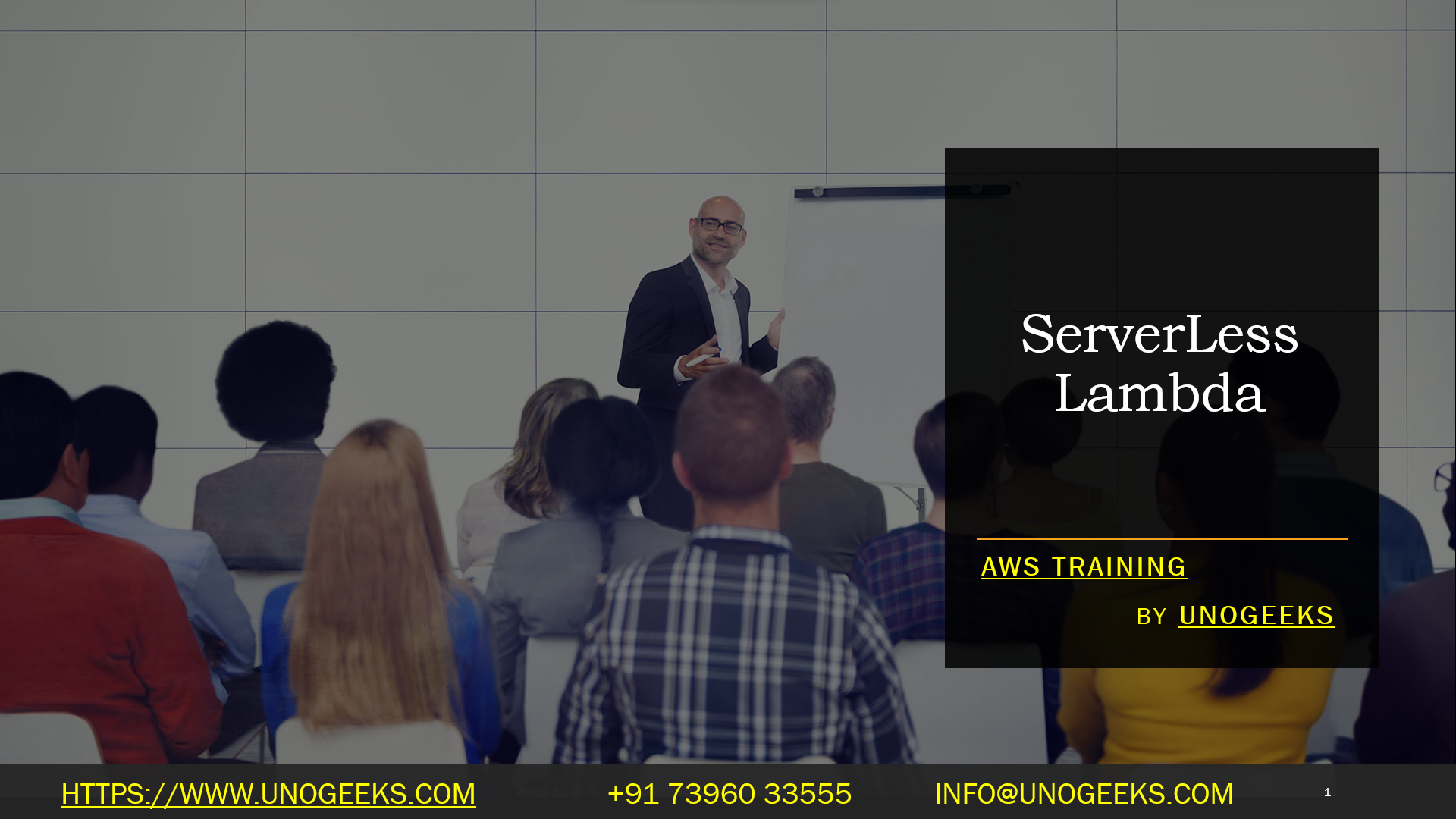ServerLess Lambda
“Serverless Lambda” seems to be a combination of two related concepts in cloud computing: “serverless” and “AWS Lambda.” Let’s break down each of these terms:
1. Serverless:
In the context of cloud computing, “serverless” does not mean that there are no servers involved. Instead, it refers to a cloud computing model where developers can deploy and run applications without the need to manage the underlying infrastructure. In a traditional server-based architecture, developers are responsible for provisioning, scaling, and maintaining servers to handle application workloads. In a serverless model, these tasks are abstracted away, and developers can focus solely on writing code for their application’s business logic.
With serverless, you pay only for the actual usage of your application, often measured in terms of execution time and resource consumption, rather than for the continuous maintenance of idle servers. This can lead to cost savings, increased flexibility, and simplified development and deployment processes.
2. AWS Lambda:
AWS Lambda is a compute service provided by Amazon Web Services (AWS). It enables developers to run code in response to events without the need to manage servers explicitly. AWS Lambda follows the serverless model, allowing developers to upload their code and define event triggers without worrying about the underlying infrastructure.
When an event occurs (such as an HTTP request, changes to data in an AWS S3 bucket, or a message from an AWS SQS queue), AWS Lambda automatically scales up, runs the code, and then scales down to zero if there is no ongoing workload. This pay-as-you-go model ensures that you only pay for the actual compute time consumed by your code.
Combining the two terms, “Serverless Lambda” likely refers to using AWS Lambda within the serverless computing paradigm.
Here’s a general outline of how you might use AWS Lambda in a serverless manner:
1. Develop your application code and business logic.
2. Package the code along with its dependencies into a deployment package.
3. Create a Lambda function in the AWS Management Console or through the AWS CLI/API, specifying the event trigger (e.g., API Gateway request, S3 object upload, etc.).
4. Upload the deployment package to AWS Lambda.
5. AWS Lambda automatically handles the scaling and execution of your code in response to the defined event triggers.
6. Monitor the function’s performance and adjust as needed.
Remember that my knowledge is up to September 2021, and there might have been updates or changes to these services beyond that date. If you are looking for more specific information or have any particular questions, feel free to ask!
Demo Day 1 Video:
Conclusion:
Unogeeks is the No.1 IT Training Institute for Amazon Web Services (AWS) Training. Anyone Disagree? Please drop in a comment
You can check out our other latest blogs on Amazon Web Services (AWS) Training here – AWS Blogs
You can check out our Best In Class Amazon Web Services (AWS) Training Details here – AWS Training

———————————-
For Training inquiries:
Call/Whatsapp: +91 73960 33555
Mail us at: info@unogeeks.com
Our Website ➜ https://unogeeks.com
Follow us:
Instagram: https://www.instagram.com/unogeeks
Facebook:https://www.facebook.com/UnogeeksSoftwareTrainingInstitute
Twitter: https://twitter.com/unogeeks
